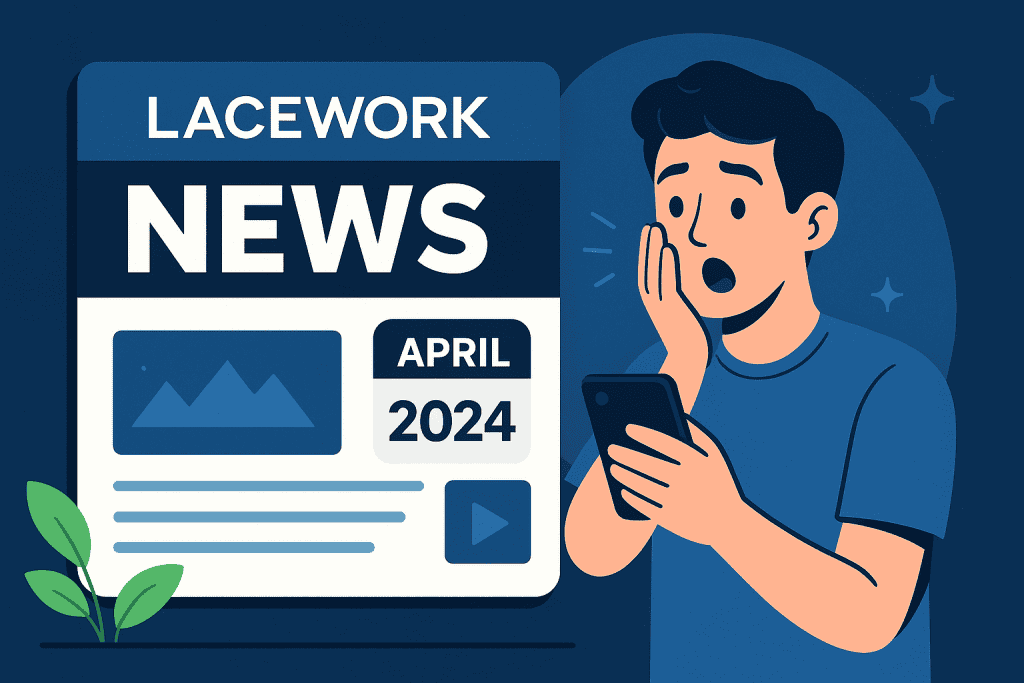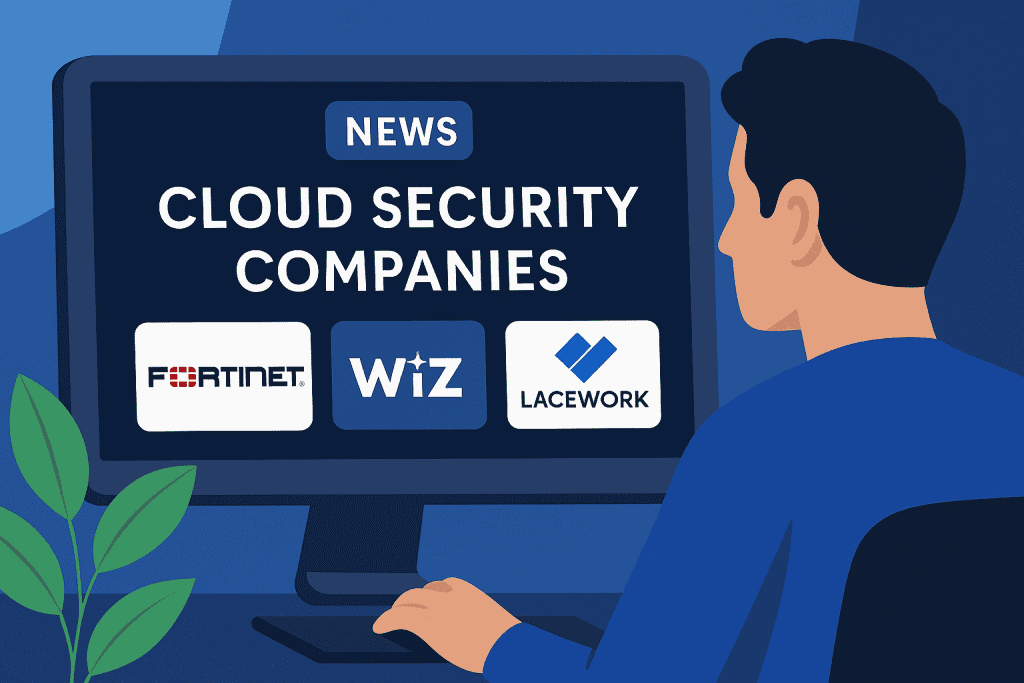In the ever-evolving world of cybersecurity, Lacework continues to make waves with its innovative approach to securing cloud environments. The company has recently become the center of attention due to potential acquisition talks and major developments that could reshape the industry. These aren’t just routine corporate announcements. They reflect a significant shift in how businesses address digital threats. Lacework, Laceworks, and the Lacework acquisition are now trending topics, signaling rising interest from investors, developers, and IT leaders.
The company’s unique focus on behavioral analytics and automation has positioned it as a frontrunner in cloud-native security. With cyber threats growing more advanced, keeping an eye on Lacework’s trajectory could offer insights into the future of cybersecurity. Whether you’re managing enterprise security or simply following industry trends, understanding these changes is essential to staying informed and protected. Let’s break down what’s happening and why it matters.
What Happened
Lacework, once celebrated as a cloud-native security powerhouse, is now making headlines for reasons far different than its innovative threat detection systems. Known for using advanced data-driven behavioral analytics to monitor and protect cloud infrastructure, the company had reached a staggering 8.3 billion dollar valuation during its peak. However, the recent revelation that cybersecurity giant Wiz is negotiating to acquire Lacework for just 150 to 200 million dollars has caught the entire tech industry off guard.
This sharp decline in valuation is more than a financial shock. It signals a significant recalibration of market expectations for security startups and suggests that even high-growth tech firms are not immune to shifts in investor sentiment and macroeconomic pressures. The proposed deal has stirred conversations about overvaluation, scalability, and the sustainability of cloud security models.
For Wiz, the acquisition could be a strategic move to bolster its own portfolio with Lacework’s cutting-edge anomaly detection and compliance automation tools. For Lacework, this could be a chance to realign its direction under new leadership and with broader resources. On the sidelines, industry watchers are wondering what this means for similar companies navigating the post-pandemic investment climate.
Ultimately, the Lacework acquisition could reshape not only the competitive dynamics among cybersecurity firms but also investor confidence in cloud-native startups as a whole. The story is still unfolding, but its ripples are already being felt across Silicon Valley and beyond.
When and Where

The buzz surrounding the Lacework acquisition began in early April 2024, when initial reports surfaced on platforms like TechCrunch and GlobeNewswire. These reports quickly gained traction, especially within professional cybersecurity communities and tech forums. The timing couldn’t have been more critical, as the news coincided with several major cybersecurity events and global cloud conferences.
Conversations intensified on platforms such as LinkedIn, Twitter, and industry Slack groups, where security professionals and investors alike weighed in on the potential implications. San Francisco, the home base of Lacework, naturally became the focal point of both media attention and professional discourse. Many insiders suggested that private meetings and negotiations were taking place during industry gatherings in the Bay Area. This convergence of timing and location gave the news a dramatic lift and further validated its authenticity. By mid-April, the Lacework story had evolved from rumor to a front-page discussion across the cybersecurity landscape.
Who is Involved

The primary players at the center of this unfolding cybersecurity story are Lacework, Wiz, and Fortinet. Lacework was founded by Sanjay Kalra and Vikram Kapoor, who envisioned a future where cloud security would rely heavily on automation, machine learning, and behavioral analytics. Their leadership helped Lacework emerge as a leading force in cloud-native security. Wiz, a rapidly growing competitor in the same domain, has gained attention for its ability to deliver scalable security solutions to major enterprises in record time.
Their interest in acquiring Lacework signals a bold move to consolidate innovation and talent in one swoop. Fortinet, another major name in the cybersecurity space, has also entered the scene by reportedly acquiring key technology assets from Lacework. This suggests a dual-track acquisition strategy that may reshape the landscape. Collectively, these players represent a broader industry trend of consolidation, where agility, automation, and strategic alignment determine who leads and who follows.
Why It Matters

The Lacework acquisition is not just a corporate transaction. It represents a pivotal moment in the evolution of cybersecurity, particularly in the cloud-native domain. Lacework once symbolized the ideal blend of innovation, automation, and scalability, offering behavioral analytics that transformed how companies detected anomalies across sprawling cloud infrastructures. Its tools empowered security teams to move from reactive to proactive defense, making it one of the most promising players in the industry.
The steep drop in its valuation from over 8 billion dollars to a reported 150 to 200 million dollars has startled both investors and competitors. It signals a sobering reassessment of tech startup valuations, particularly those built on long-term growth projections rather than immediate profitability. This correction is not isolated. It suggests that cybersecurity firms will need to prove not only their technology but their financial sustainability and go-to-market strength.
Wiz, which has rapidly grown through aggressive customer acquisition and streamlined cloud security solutions, stands to gain significantly if the deal goes through. It could consolidate market share, integrate Lacework’s intellectual property, and dominate the cloud security narrative. Meanwhile, Fortinet’s quiet acquisition of Lacework assets hints at a trend where established giants absorb startup technologies to accelerate innovation.
This moment matters because it reflects a maturing industry where consolidation, practicality, and execution are beginning to outweigh hype, funding rounds, and valuation milestones.
Quotes or Statements
Cloud security is no longer just an IT problem; it’s a boardroom issue, said a Fortinet representative in their recent announcement reinforcing their cloud-native security goals
Another source from TechCrunch reported:
Wiz’s interest in Lacework could reshape the competitive landscape of cybersecurity for years to come
Conclusion
This unfolding acquisition reflects a broader transformation in the cybersecurity industry. A company once celebrated for cloud-native innovation now finds itself at the center of debates on sustainable growth, practical valuations, and the future of integrated security platforms. As news of this potential buyout trends across tech circles, it reveals just how quickly the market can shift and how even highly regarded players are affected by changing financial and operational dynamics.
Should the deal with Wiz move forward, it could inspire a wave of similar acquisitions, as firms look to strengthen their competitive edge through consolidation. Fortinet’s reported interest in acquiring portions of the company’s technology only reinforces the growing push toward absorbing niche solutions into larger security frameworks. These developments are not merely financial transactions but strategic moves reshaping how cybersecurity is approached and deployed at scale.
Ultimately, this story represents both opportunity and caution. It sends a clear message to startups about the importance of not just innovation but also long-term resilience. For enterprise leaders and developers alike, the coming changes will likely influence how security solutions are built, marketed, and adopted across global digital infrastructures.
Resources
- Fortinet. FortiCNAPP
- AWS Marketplace. Lacework Vendor Profile
- TechCrunch. Wiz is in talks to buy Lacework
- Crunchbase. Lacework Overview
- GlobeNewswire. Fortinet Completes Acquisition of Lacework
- YouTube. Lacework Acquisition Analysis
- Twitter. Fortinet Acquisition Statement
